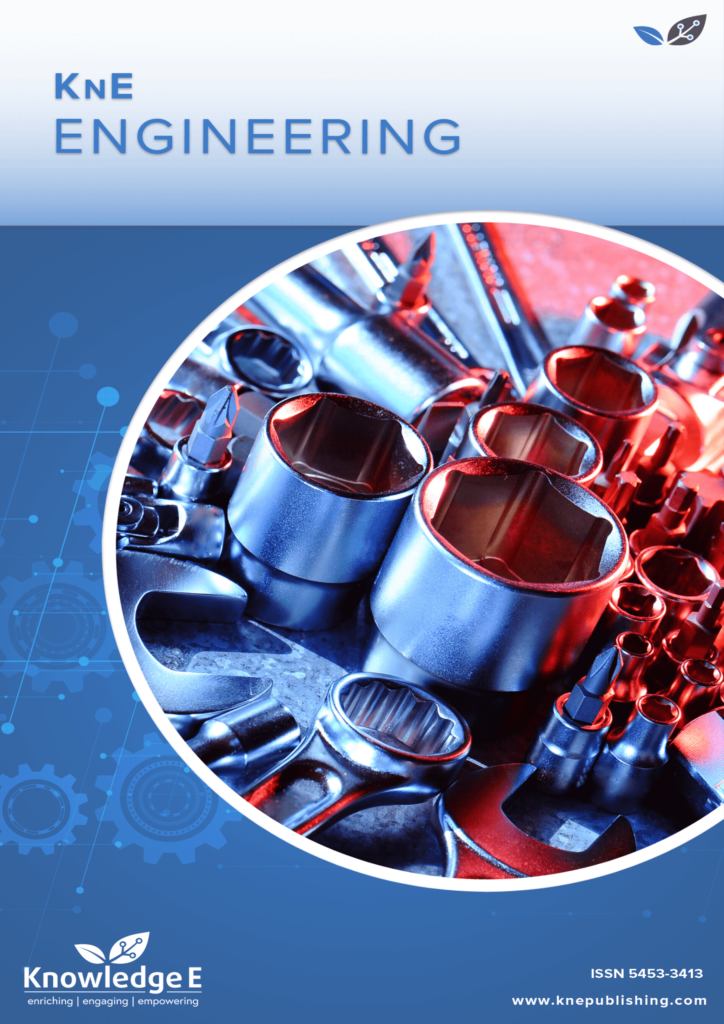
KnE Engineering
ISSN: 2518-6841
The latest conference proceedings on all fields of engineering.
Microelectromechanical Sensors and Microstructures in Aerospace Applications
Published date:Oct 08 2018
Journal Title: KnE Engineering
Issue title: Breakthrough directions of scientific research at MEPhI: Development prospects within the Strategic Academic Units
Pages:336–343
Authors:
Abstract:
The solutions in the sphere of MEMS technologies in space are overviewed in this article. The main emphasis is on micro-thrusters, which have the potential to enable missions that require micro-propulsive maneuvers for formation flying and precision pointing of micro-, nano-, or pico-sized satellites. The possible use of MEMS sensors and technologies of production are shown.
References:
[1] Implications of Emerging Micro- and Nanotechnologies Committee on Implications of Emerging Micro- and Nanotechnologies. Air Force Science and Technology Board Division on Engineering and Physical Sciences, 2002.
[2] McComas, D. J., et al. (2003). Space applications of microelectromechanical systems: Southwest Research Institute1 vacuum microprobe facility and initial vacuum test results. Review of Scientific Instruments, vol. 74, no. 8, pp. 3874–3878.
[3] Yao, J. J., et al. (2001). Microelectromechanical system radio frequency switches in a picosatellite mission. Smart Materials and Structures, vol. 10, no. 6, pp. 1196–1203.
[4] Micro Thrusters built by TRW Team targets future microsatellites. Small Times “Business Wire,” May 16, 2001.
[5] Twiggs, R. (2000). Space system developments at Stanford University – From launch experience of microsatellites to the proposed future use of picosatellites. Proceedings of SPIE, vol. 4136, pp. 79–86.
[6] Kitts, C. A. and Twiggs, R. J. (1995). Initial developments in the Stanford SQUIRT program. Proceedings of SPIE, vol. 2317, pp. 178–185.
[7] Kitts, C., et al. (1999). Emerald: A low-cost spacecraft mission for validating formation flying technologies. Proceedings of the 1999 IEEE Aerospace Conference, Mar 6–13, 1999, vol. 2, p. 217226.
[8] Sekler, J., et al. (2003). COPS – A novel pressure gauge using MEMS devices for space, pp. 439–443. European Space Agency, (Special Publication) ESA SP.
[9] Sekler, J. and Wobmann, L. (2003). Development of an European QCM – Outgassing detector withminiaturised interfaces. European Space Agency, (Special Publication) ESA SP, pp. 515–519.
[10] Lafontan, X., et al. (2003). The advent of MEMS in space. Microelectronics Reliability, vol. 43, no. 7, pp. 1061–1083.
[11] Hampton, P., et al. (2003). Adaptive optics control system development. Proceedings of SPIE, vol. 5169, pp. 321–330.
[12] Andreev, K. A., Vlasov, A. I., and Shakhnov, V. A. (2016). Silicon pressure transmitters with overload protection. Automation and Remote Control, Т. 77, no. 7, С. 1281–1285.
[13] Vlasov, A. and Yudin, A. (2011). Distributed control system in mobile robot application: General approach, realization and usage. Communications in Computer and Information Science, T. 156 CCIS, pp. 180–192.
[14] Yudin, A., Kolesnikov, M., Vlasov, A., et al. (2017). Project oriented approach in educational robotics: from robotic competition to practical appliance. Advances in Intelligent Systems and Computing, Т. 457, С. 83–94.
[15] Sergeeva, N. A., Tsivinsky, T. A., and Shakhnov, V. A. (2016). Control and measuring MEMS with use of small-sized sensitive elements from single-crystal silicon for space branch. Sensors and Systems, no. 3, pp. 32–39.